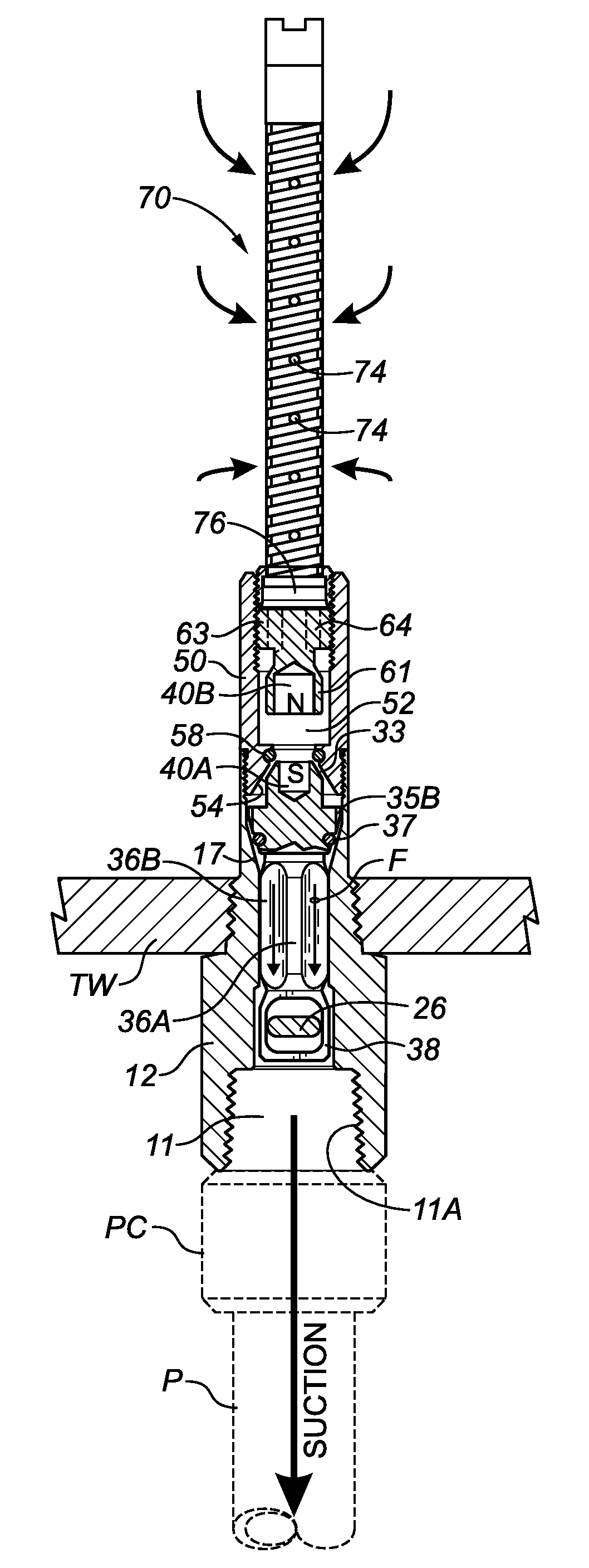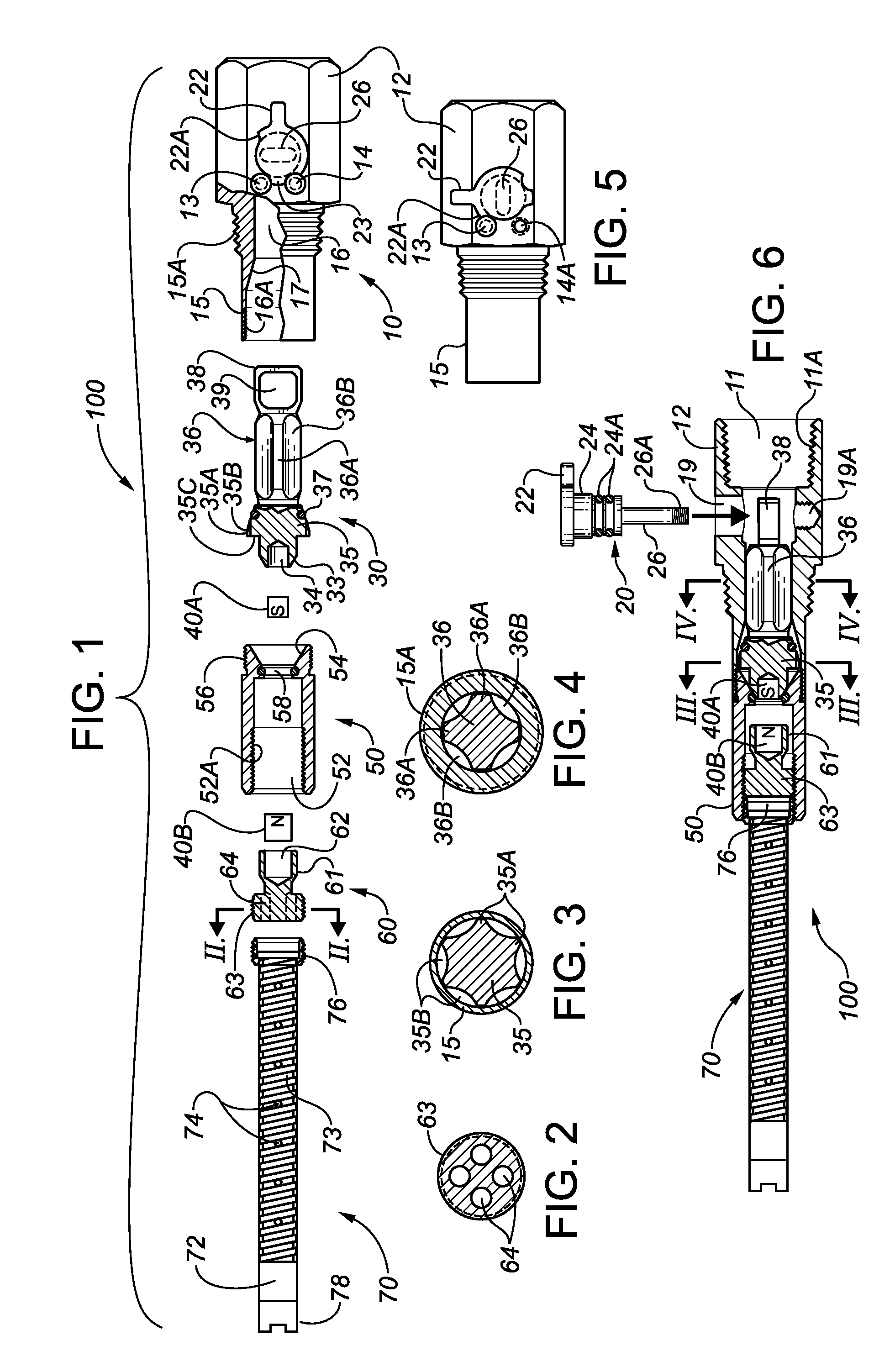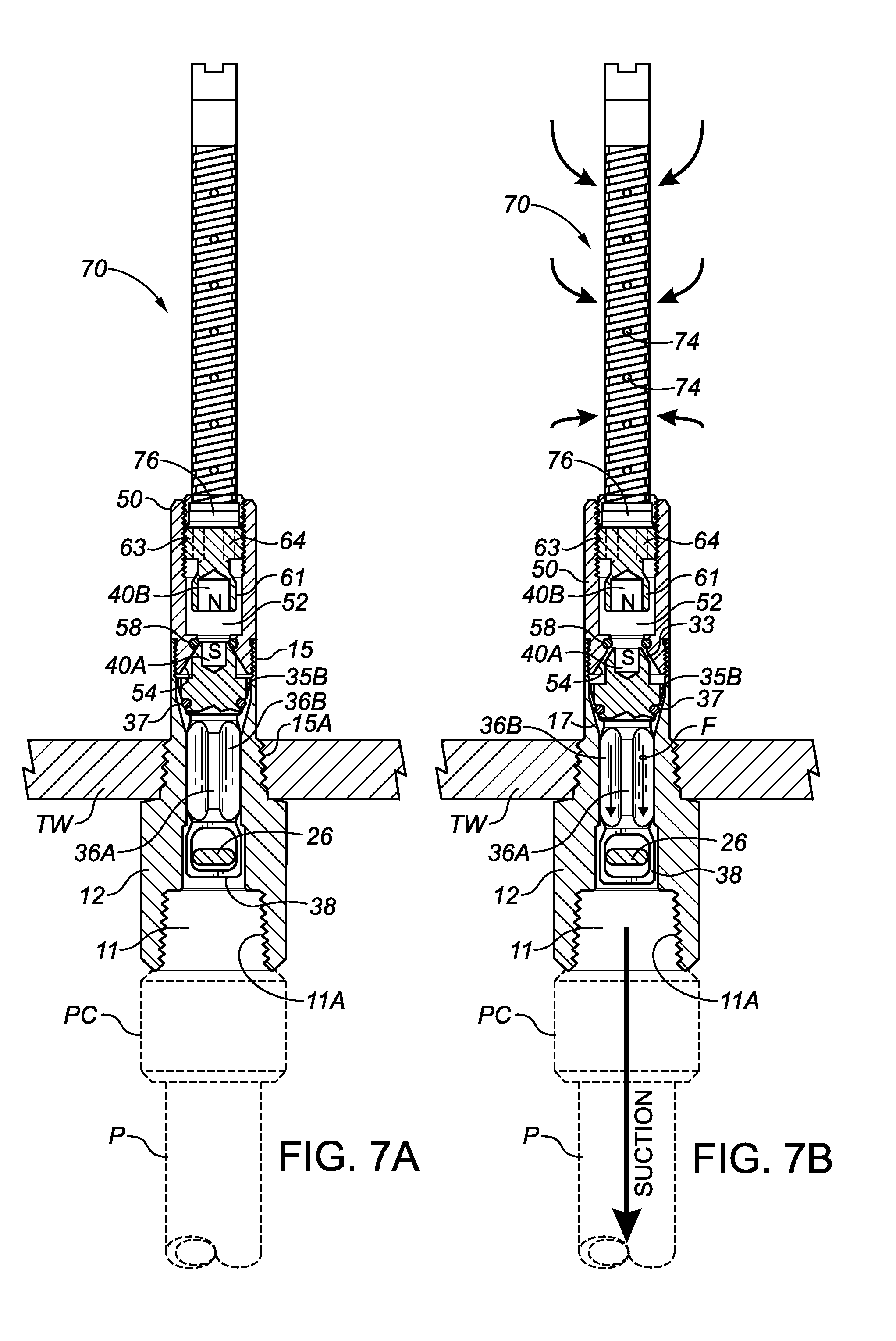Dual-direction in-tank magnetic safety valve
a magnetic safety valve and in-tank technology, applied in the field of valves, can solve the problems of large pressure differential between the rear and front of the piston head, the liquid column in the piping presents an additional potential hazard, etc., and achieve the effects of preventing the loss of fluid from the tank, reducing the risk of leakage, and increasing the spatial distance relationship between the magnets
- Summary
- Abstract
- Description
- Claims
- Application Information
AI Technical Summary
Benefits of technology
Problems solved by technology
Method used
Image
Examples
Embodiment Construction
[0026]The accompanying Figures illustrate one non-limiting embodiment of a magnetic safety valve 100 in accordance with the present disclosure. Valve 100 includes a main valve body comprising an outer valve body 10 and an inner valve body 50. Outer valve body 10 has an outer section 12 and an inner section 15, with inner section 15 having an externally threaded section 15A for mounting valve 100 in an opening through the wall of a storage tank. A bore 11 extends through outer valve body 10, and an outer region of bore 11 is adapted (such as by internal threading 11A as illustrated) to facilitate connection to piping P leading to a pump or other appliance. A transverse bore 19 is provided through the wall of outer section 12 of outer valve body 10 for receiving a valve actuating assembly 20.
[0027]In the illustrated embodiment, valve actuating assembly 20 comprises an actuating handle 22 connected to a cylindrical shank 24 rotatably disposable within transverse bore 19, in conjunction...
PUM
 Login to view more
Login to view more Abstract
Description
Claims
Application Information
 Login to view more
Login to view more - R&D Engineer
- R&D Manager
- IP Professional
- Industry Leading Data Capabilities
- Powerful AI technology
- Patent DNA Extraction
Browse by: Latest US Patents, China's latest patents, Technical Efficacy Thesaurus, Application Domain, Technology Topic.
© 2024 PatSnap. All rights reserved.Legal|Privacy policy|Modern Slavery Act Transparency Statement|Sitemap



